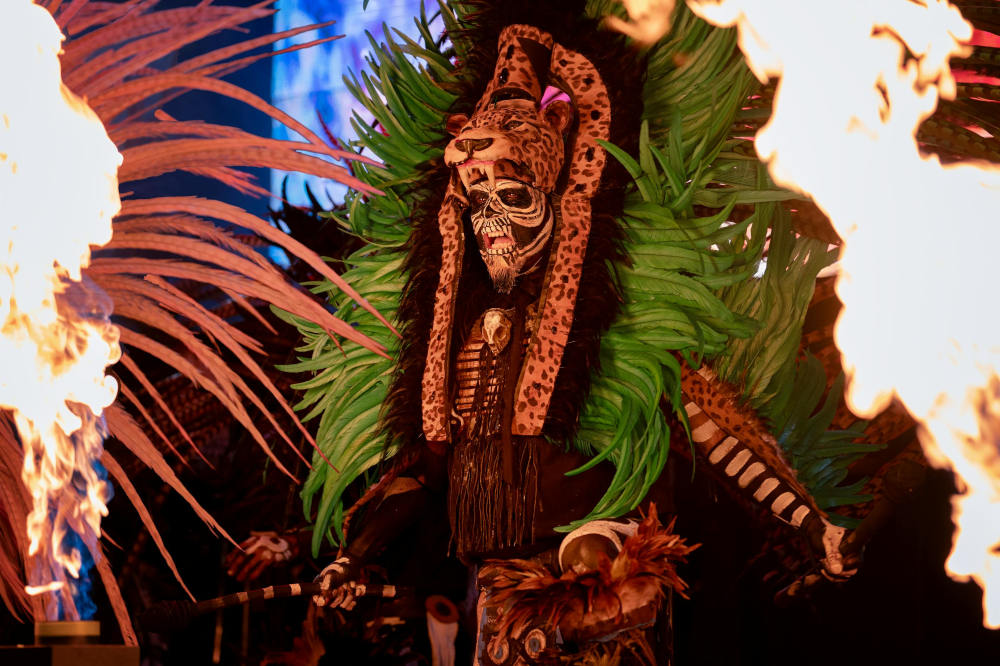
In der heutigen spirituellen Landschaft wird Schamanismus oft mit anderen mystischen oder esoterischen Praktiken unter dem Oberbegriff „Okkultismus“ zusammengefasst. Doch ist diese Einteilung zutreffend? Zwar gibt es Ähnlichkeiten zwischen Schamanismus und okkulten Traditionen, doch sind sie nicht dasselbe. Das Verständnis ihrer Ursprünge, Weltanschauungen und Praktiken hilft zu verstehen, warum Schamanismus manchen „okkult“ erscheinen mag – sich aber in mehreren wichtigen Punkten davon unterscheidet.
Definition des Schamanismus
Schamanismus ist eine uralte spirituelle Praxis, die in vielen indigenen Kulturen weltweit verbreitet ist – von Sibirien und der Mongolei bis hin zu Amerika, Afrika und Südostasien. Im Kern basiert Schamanismus auf dem Glauben an eine unsichtbare Welt der Geister, die Einfluss auf die materielle Welt nehmen kann. Schamanen, oft durch Geburt, Initiation oder Berufung ausgewählt, fungieren als Vermittler zwischen der Geisterwelt und der menschlichen Welt.
Zu den Hauptmerkmalen des Schamanismus gehören:
-
Geisterkommunikation: Schamanen interagieren mit Geistführern, Tiergeistern, Vorfahren oder Naturgeistern.
-
Trance oder veränderte Bewusstseinszustände: Oft herbeigeführt durch Trommeln, Singen, Tanzen oder Pflanzenmedizin.
-
Heilung und Führung: Schamanen führen Rituale durch, um Krankheiten zu heilen, verlorene Seelen zurückzugewinnen oder Erkenntnisse zu gewähren.
-
Verbindung zur Natur: Viele schamanische Traditionen betrachten alles Leben als miteinander verbunden und heilig.
Schamanismus ist keine Religion im organisierten Sinne. Er hat weder eine feste Doktrin noch eine zentralisierte Institution. Vielmehr handelt es sich um ein flexibles und erfahrungsbasiertes System, das über Generationen weitergegeben wird.
Definition des Okkulten
Okkultismus bezieht sich auf Wissen und Praktiken, die mit dem Verborgenen, Mysteriösen oder Übernatürlichen verbunden sind. Das Wort „Okkultismus“ kommt vom lateinischen occultus und bedeutet „verborgen“ oder „geheim“. Es umfasst oft:
-
Esoterische Philosophie
-
Alchemie, Astrologie und Wahrsagerei
-
Zeremonielle Magie und rituelle Praktiken
-
Verborgenes Wissen, Symbole und Initiationen
Der Okkultismus erlangte in Europa während der Renaissance und erneut im 19. und 20. Jahrhundert durch Geheimgesellschaften wie den Hermetic Order of the Golden Dawn, die Theosophische Gesellschaft und Aleister Crowleys Thelema-Bewegung besondere Struktur und Popularität. Er vermischt westliche mystische Traditionen, Kabbala, Gnostizismus und manchmal sogar Elemente östlicher Spiritualität.
Das Schlüsselelement des Okkulten ist die Suche nach verborgenem Wissen oder Macht, oft durch Studium, Initiation und symbolische Rituale.
Warum Schamanismus manchmal als Okkultismus angesehen wird
Es gibt mehrere Gründe, warum Schamanismus als „okkult“ bezeichnet wird:
-
Mystische Erfahrungen : Sowohl Schamanismus als auch Okkultismus beinhalten veränderte Bewusstseinszustände, Visionen und spirituelle Kommunikation, die Außenstehenden mysteriös oder übernatürlich erscheinen können.
-
Verborgenes Wissen : Schamanen gewinnen oft Erkenntnisse aus spirituellen Quellen, die normalen Menschen nicht zugänglich sind – ähnlich der okkulten Suche nach verborgener Weisheit.
-
Rituelle Praktiken : Von Trommeln und Gesängen bis hin zu symbolischen Werkzeugen und heiligen Kräutern können schamanische Rituale für diejenigen, die mit ihrem kulturellen Kontext nicht vertraut sind, okkulten Zeremonien ähneln.
-
Außenwahrnehmung : Insbesondere im westlichen Kontext wird alles, was außerhalb der etablierten Religion liegt – seien es indigene Rituale, Tarot oder Medialität – aufgrund mangelnden Verständnisses oft als „okkult“ zusammengefasst.
Diese Assoziation kann jedoch irreführend und problematisch sein. Sie birgt die Gefahr, die tiefen kulturellen, spirituellen und historischen Wurzeln schamanischer Traditionen zu ignorieren.
Hauptunterschiede zwischen Schamanismus und Okkultismus
Lassen Sie uns die grundlegenden Unterschiede zwischen Schamanismus und Okkultismus untersuchen:
1. Kulturelle Ursprünge
-
Der Schamanismus wurzelt in indigenen Kulturen und mündlichen Überlieferungen. Er ist eng mit bestimmten Gemeinschaften, Landschaften und Ökosystemen verbunden. Jede Kultur hat ihre eigene Version (z. B. Sámi Noaidi, Amazonas-Ayahuasquero, sibirischer Schamane).
-
Das Okkulte hingegen ist größtenteils ein westliches Konstrukt, das sich aus esoterischen, philosophischen und magischen Traditionen speist. Es ist eher intellektuell und synkretistisch und vermischt Elemente aus vielen Quellen.
2. Zweck und Rolle
-
Schamanen dienen ihrer Gemeinschaft, indem sie heilen, führen und das Gleichgewicht zwischen der sichtbaren und der unsichtbaren Welt aufrechterhalten.
-
Okkultismuspraktiker arbeiten oft allein oder in esoterischen Gruppen und konzentrieren sich auf persönliche Transformation, verborgenes Wissen oder magische Ermächtigung.
3. Werkzeuge und Symbole
-
Schamanen verwenden typischerweise natürliche Werkzeuge – Federn, Steine, Trommeln, Pflanzen – denen durch kulturelle Praktiken eine spirituelle Bedeutung verliehen wird.
-
Okkultisten verwenden symbolische Systeme wie Astrologie, Alchemie und zeremonielle Magie mit komplexen Diagrammen, heiliger Geometrie und verschlüsselten Ritualen.
4. Initiierung und Zugang
-
Schamanismus wird normalerweise durch Abstammung, Ausbildung oder spontane spirituelle Berufung weitergegeben, oft begleitet von einer „schamanischen Krankheit“ oder Nahtoderfahrung.
-
Okkultes Wissen wird traditionell geheim gehalten und durch strukturierte Initiation, Studium und oft hierarchische Organisationen weitergegeben.
5. Blick auf die Natur
-
Der Schamanismus ist animistisch. Er betrachtet die Natur als lebendig und heilig, voller Geister und Bewusstsein.
-
Okkultismus respektiert zwar die Natur, konzentriert sich jedoch häufig auf die Manipulation von Energie, Symbolen oder Archetypen durch den Willen des Praktizierenden.
Überschneidungspunkte
Trotz ihrer Unterschiede gibt es Überschneidungen zwischen Schamanismus und Okkultismus in einigen Bereichen:
-
Einsatz von Trance und Ritualen : Beide Traditionen verstehen die Macht veränderter Zustände und heiliger Zeremonien.
-
Interaktion mit Geistern : Die Kommunikation mit nichtphysischen Wesen – seien es Geister, Engel oder Elementarwesen – ist für beide von zentraler Bedeutung.
-
Heilung und Transformation : Beide Wege zielen darauf ab, Veränderung, Heilung oder Erleuchtung herbeizuführen.
Moderne spirituelle Sucher vermischen oft schamanische und okkulte Elemente auf eklektische Weise, was zu Praktiken wie dem Neoschamanismus führt, der zwar schamanische Methoden übernimmt, aber möglicherweise keine kulturelle Grundlage hat.
Neoschamanismus und die Wiederbelebung des Okkulten
In den letzten Jahrzehnten hat das westliche Interesse am Schamanismus stark zugenommen, unter anderem dank Autoren wie Michael Harner und Carlos Castaneda. Diese moderne Form – manchmal auch Neoschamanismus genannt – löst schamanische Praktiken von ihren indigenen Wurzeln und verbindet sie mit Psychologie, persönlicher Entwicklung und manchmal auch mit New-Age- oder okkulten Philosophien.
Neoschamanismus:
-
Verwendet Trommeln oder Reisen, um innere Welten zu erkunden
-
Enthält Chakra-Systeme, Kristalle und geführte Visualisierung
-
Fehlt die traditionelle Initiation oder Gemeinschaftsrolle
Aufgrund seines eklektischen und individualistischen Charakters wird der Neoschamanismus eher mit dem Okkultismus oder der New-Age-Bewegung in Verbindung gebracht als mit dem traditionellen Schamanismus.
Ist Schamanismus im negativen Sinne „okkult“?
In der Mainstream-Kultur hat „Okkultismus“ oft eine negative Konnotation – er wird mit Dunkelheit, Geheimnis oder sogar Bösem assoziiert. Dies liegt größtenteils an Missverständnissen, religiöser Voreingenommenheit und Sensationsgier.
Diese Bezeichnung auf den Schamanismus anzuwenden, kann gegenüber indigenen Traditionen zutiefst respektlos sein. Für viele Kulturen ist Schamanismus eine heilige, gemeinschaftsbasierte Heilpraxis – kein geheimnisvolles oder machtorientiertes System.
Wenn wir „okkult“ jedoch in seiner ursprünglichen Bedeutung verwenden – also als Bezug auf verborgenes oder außergewöhnliches Wissen –, gibt es gewisse Überschneidungen. Doch selbst dann unterscheidet sich der Schamanismus hinsichtlich seiner Zielsetzung, Weltanschauung und seines kulturellen Kontextes.
Abschließende Gedanken: Klassifizierung vs. Verständnis
Ist Schamanismus also okkult?
Die kurze Antwort lautet: Nein – nicht im traditionellen oder westlichen esoterischen Sinne . Obwohl Schamanismus und okkulte Praktiken beide mit Geisterwelten, Ritualen und verändertem Bewusstsein verbunden sein können, sind ihre Wurzeln, Ziele und Weltanschauungen völlig unterschiedlich.
-
Schamanismus ist gemeinschaftsorientiert, naturbasiert und kulturspezifisch.
-
Das Okkulte ist oft individuell, symbolisch und philosophisch vielseitig.
Die Bezeichnung „Okkultismus“ für Schamanismus mag zwar praktisch sein, birgt aber die Gefahr, reiche spirituelle Traditionen in einen westlich geprägten Rahmen zu pressen. Es ist weitaus respektvoller und zutreffender, Schamanismus als lebendige, sich entwickelnde und heilige Praktiken zu verstehen, die menschliche Kulturen seit Jahrtausenden prägen.
Quellen:
-
Eliade, Mircea. Schamanismus: Archaische Techniken der Ekstase (1951)
-
Harner, Michael. Der Weg des Schamanen (1980)
-
Winkelman, Michael. „Schamanismus: Ein biopsychosoziales Paradigma des Bewusstseins und der Heilung“
-
Hanegraaff, Wouter J. Esotericism and the Academy (2012)
-
Quellen und ethnografische Berichte zum Überleben der indigenen Kultur
War dieser Artikel hilfreich für Sie? Bitte teilen Sie uns in den Kommentaren unten mit, was Ihnen gefallen oder nicht gefallen hat.
About the Author: Alex Assoune
Wogegen Wir Kämpfen
Weltweit-Konzerne produzieren in den ärmsten Ländern im Übermaß billige Produkte.
Fabriken mit Sweatshop-ähnlichen Bedingungen, die die Arbeiter unterbezahlt.
Medienkonglomerate, die unethische, nicht nachhaltige Produkte bewerben.
Schlechte Akteure fördern durch unbewusstes Verhalten den übermäßigen Konsum.
- - - -
Zum Glück haben wir unsere Unterstützer, darunter auch Sie.
Panaprium wird von Lesern wie Ihnen finanziert, die sich unserer Mission anschließen möchten, die Welt völlig umweltfreundlich zu gestalten.
Wenn Sie können, unterstützen Sie uns bitte monatlich. Die Einrichtung dauert weniger als eine Minute und Sie werden jeden Monat einen großen Beitrag leisten. Danke schön.































0 Kommentare